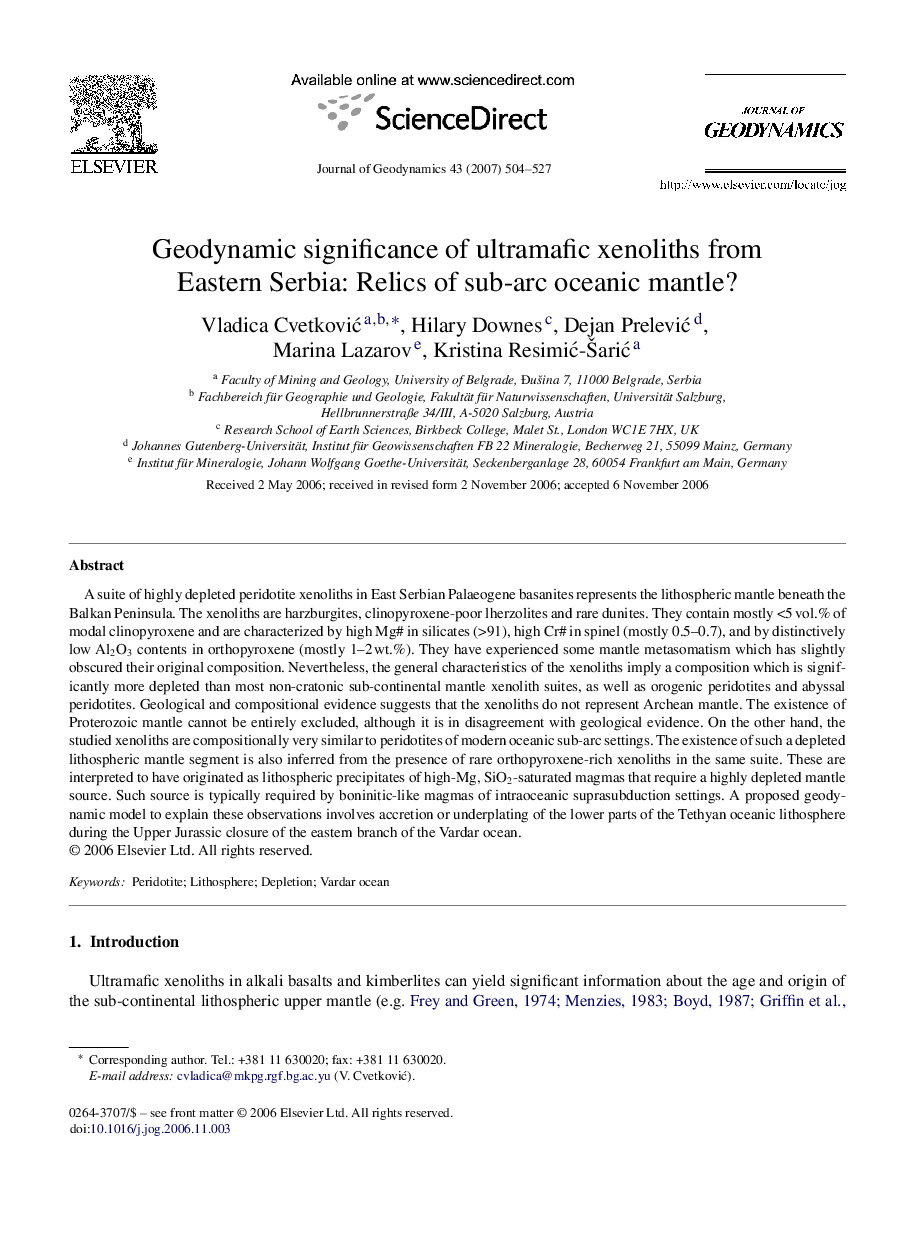| Article ID | Journal | Published Year | Pages | File Type |
|---|---|---|---|---|
| 4688801 | Journal of Geodynamics | 2007 | 24 Pages |
A suite of highly depleted peridotite xenoliths in East Serbian Palaeogene basanites represents the lithospheric mantle beneath the Balkan Peninsula. The xenoliths are harzburgites, clinopyroxene-poor lherzolites and rare dunites. They contain mostly <5 vol.% of modal clinopyroxene and are characterized by high Mg# in silicates (>91), high Cr# in spinel (mostly 0.5–0.7), and by distinctively low Al2O3 contents in orthopyroxene (mostly 1–2 wt.%). They have experienced some mantle metasomatism which has slightly obscured their original composition. Nevertheless, the general characteristics of the xenoliths imply a composition which is significantly more depleted than most non-cratonic sub-continental mantle xenolith suites, as well as orogenic peridotites and abyssal peridotites. Geological and compositional evidence suggests that the xenoliths do not represent Archean mantle. The existence of Proterozoic mantle cannot be entirely excluded, although it is in disagreement with geological evidence. On the other hand, the studied xenoliths are compositionally very similar to peridotites of modern oceanic sub-arc settings. The existence of such a depleted lithospheric mantle segment is also inferred from the presence of rare orthopyroxene-rich xenoliths in the same suite. These are interpreted to have originated as lithospheric precipitates of high-Mg, SiO2-saturated magmas that require a highly depleted mantle source. Such source is typically required by boninitic-like magmas of intraoceanic suprasubduction settings. A proposed geodynamic model to explain these observations involves accretion or underplating of the lower parts of the Tethyan oceanic lithosphere during the Upper Jurassic closure of the eastern branch of the Vardar ocean.
